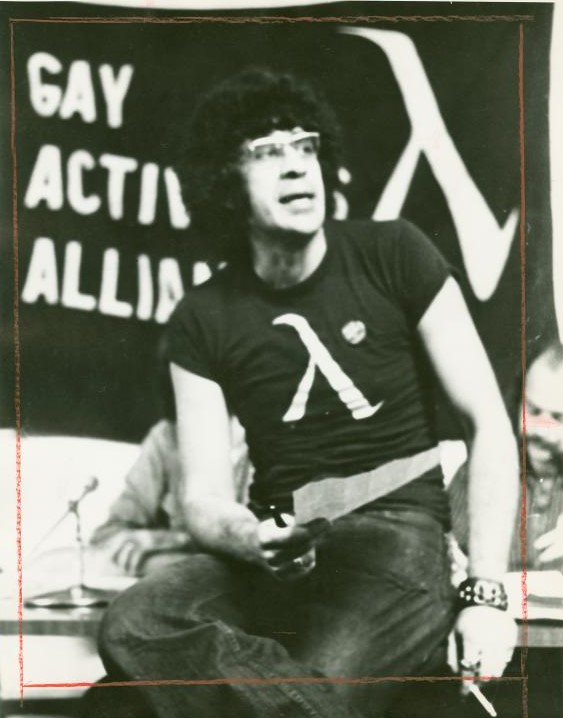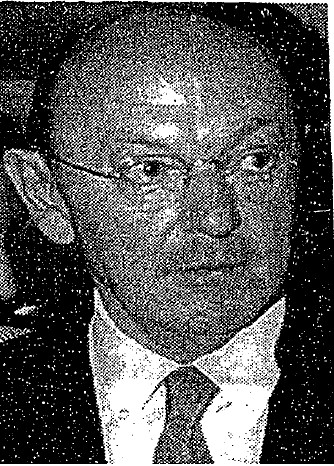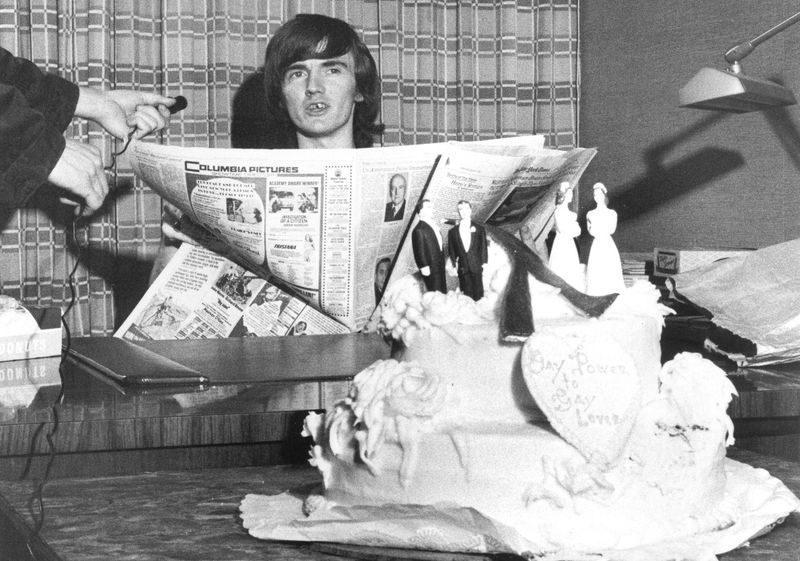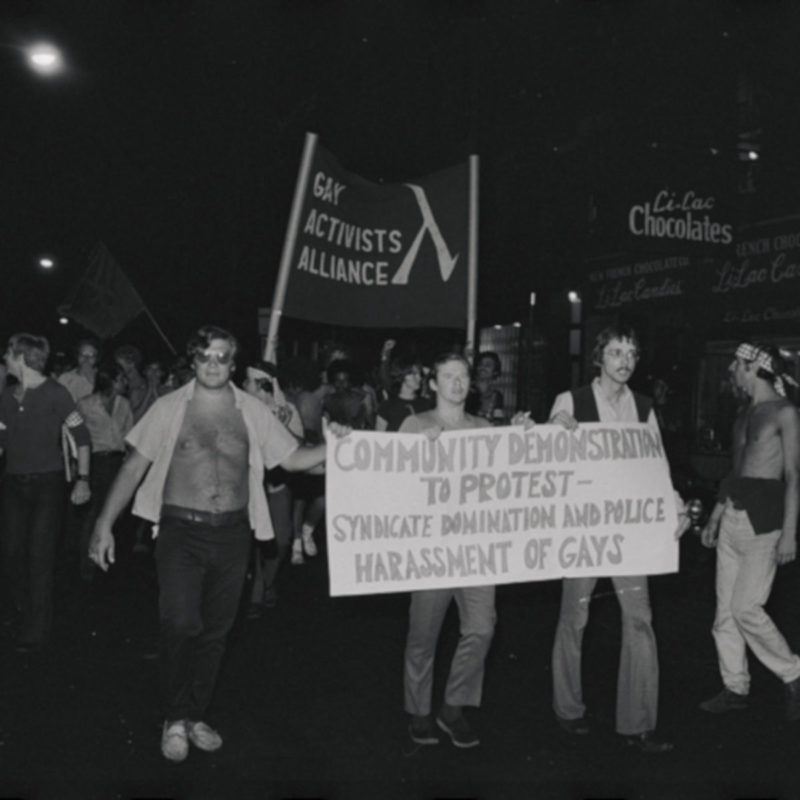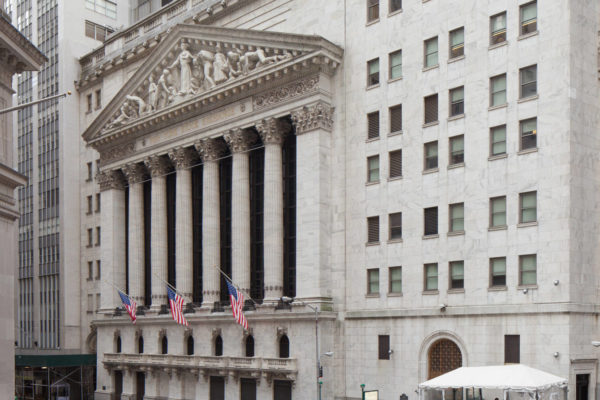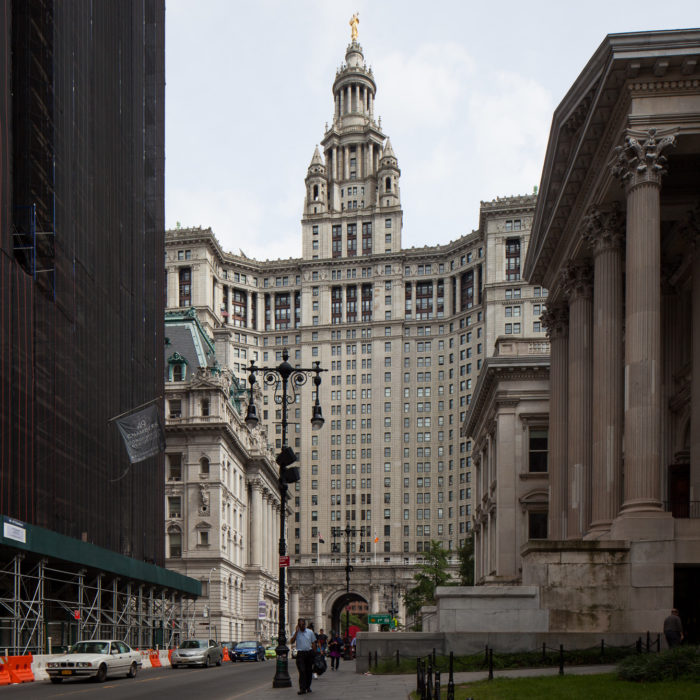
Gay Activists Alliance Zap at the New York City Marriage Bureau
located in the Municipal Building
overview
New York’s City Clerk Herman Katz became incensed over the publicity of a same-sex “illegal marriage” at the Church of the Holy Apostles in April 1971, and threatened legal action.
In response, the Gay Activists Alliance held one of its most famous and creative zaps, an engagement party for two same-sex couples, complete with wedding cake, on June 4, 1971, at the Marriage Bureau in the Municipal Building.
On the Map
VIEW The Full MapHistory
In July 1970, Rev. Robert O. Weeks, Episcopal rector of the Church of the Holy Apostles in Chelsea, allowed Sunday afternoon services of the pioneering Church of the Beloved Disciple, “a church for gay people.” Beloved Disciple was founded by Father Robert M. Clement, a former priest in the Polish National Catholic Church and the first openly gay priest to participate in the Christopher Street Liberation Day March, in June 1970. Clement began to publicly officiate over same-sex “holy union” ceremonies at Holy Apostles that same month, which began to attract notice. The union of a Latina and African-American female couple, Bobbi Jean Sanchez and Joan Kearse, in April 1971 was covered in stories by the New York Post and Jet, a magazine marketed to African-American readers. Weeks also presided over a number of same-sex “services of friendship.”
New York’s City Clerk Herman Katz, incensed at these “illegal marriages” after reading the Post article, threatened legal action. A former New York Assemblyman, Katz was City Clerk from 1958 to 1974. Though the Gay Activists Alliance (GAA) took no formal position on the issue of same-sex marriage or on religion in general, it considered that Katz as a public official was acting with blatant discrimination. GAA also had a relationship with Holy Apostles, as its meeting place between January 1970 and May 1971, when the Gay Activists Alliance Firehouse in SoHo opened.
GAA had formed a Municipal Government Committee after the 1970 election, which was chaired by Marc Rubin. As its first action, it planned a zap at the Marriage Bureau in the Municipal Building downtown on June 4, 1971. (See our curated theme for background on the “zap” tactic.) This became one of GAA’s most famous and creative zaps – an engagement party for two same-sex couples, complete with wedding cake.
The morning of the zap, about 35 GAA members met at the Firehouse planning the final details, then traveled downtown. They transported the wedding cake, doughnuts, and a coffee machine to Katz’s office on the second story (Katz was not at work that day). The cake was adorned with a gold Lambda, same-sex male and female couples, and the inscription “GAY POWER TO GAY LOVERS.” GAA members distributed leaflets throughout the building inviting city employees to the party:
The Honorable Herman Katz, City Clerk, invites you to an engagement reception for Messrs. John Basso and John G. Bond, Messrs. Steve Krotz and Vito Russo, at his office, Room 265, Municipal Building, Friday, June 4, 1971, at 10:00 a.m. All welcome. Dress optional. Sponsored by Gay Activists Alliance.
The atmosphere remained festive, with singing and dancing. Arthur Evans answered the telephone and told callers the bureau was only issuing gay licenses that day, and invited them to the party. The Deputy City Clerk, however, called the police, who asked the activists to leave the building.
Several members remained in front of the building, leafleted, and were interviewed by two TV crews. Rubin was quoted as saying that the zap demonstrated “that everybody in New York had better know that they can’t push gay people around, because the community’s there and will stand up for its own.” GAA later showed videotapes of the zap at Firehouse dances, to help demonstrate to people the concept and power of zaps.
Katz resigned under pressure as City Clerk in 1974, when he came under investigation for payroll irregularities. He was indicted in 1975, but never prosecuted.
Read about other GAA actions, listed in chronological order, in our curated theme.
WNYC-TV
Publicly owned WNYC-TV was located on the 36th floor of the Municipal Building from 1954 to 1996, when the city sold the station. In June 1982, Larry Kramer appeared on the first television segment on AIDS, on “The Lavender Connection.” Vito Russo wrote, produced, and co-hosted the pioneering WNYC-TV series called “Our Time” focusing on the LGBT community, the arts, and news in 1983.
Entry by Jay Shockley, project director (August 2020).
NOTE: Names above in bold indicate LGBT people.
Building Information
- Architect or Builder: William M. Kendall of McKim, Mead & White
- Year Built: 1907-14
Sources
Gay Activists Alliance, General Meeting Minutes, April 22 and May 27, 1971.
Herman Katz, 90, A Former City Clerk And Assemblyman,” The New York Times, March 23, 1990, B6.
K.M. Richards, “WNYC-TV/31, New York, NY,” UHF, bit.ly/3lUKCsU.
Lillian Faderman, The Gay Revolution: The Story of the Struggle (New York: Simon & Schuster, 2015), 224.
Michael Schiavi, Celluloid Activist: The Life and Times of Vito Russo (Madison: University of Wisconsin Press, 2011), 215.
Morty Manford and Arthur Evans, “The Theory and Practice of Confrontation Tactics,” GAY, February 12, 1973, 18-19.
Municipal Wins Lindsay Support,” Gay Activist, June 1971, 10.
Peter Fisher, “Gay Couples Celebrate Engagement at Marriage License Bureau,” GAY, July 5, 1971.
Do you have more information about this site?
This project is enriched by your participation! Do you have your own images of this site? Or a story to share? Would you like to suggest a different historic site?
